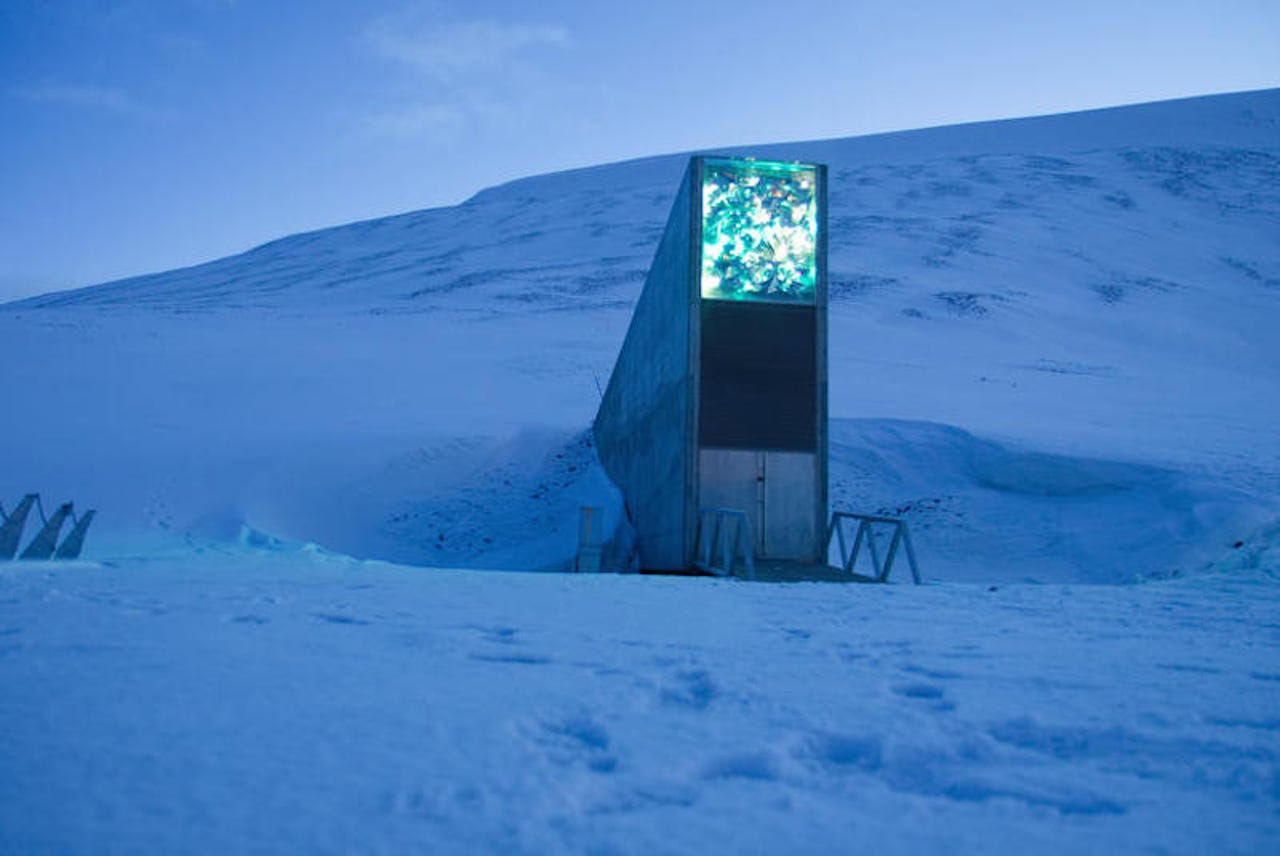The world's most important cold storage facility safeguards the future of food


The Seed Vault represents the world's largest collection of crop diversity in is located deep inside a mountain on the Svalbard archipelago, halfway between mainland Norway and the north pole.
This article was originally published on TechRepublic.
In the Svalbard archipelago, roughly midway between mainland Norway and the North Pole, is a facility that takes the concept of offsite backup to a new--yet vitally important--extreme. The Svalbard Global Seed Vault is the world's largest secure seed bank, carved 100 meters into the solid rock of a permafrost mountain, in the northernmost location accessible by regularly scheduled commercial flights. The Global Seed Vault is intended to serve as the backup facility for seed banks around the world, to supply seeds in the event that environmental or political disasters destroy existing crops.
SEE: Disaster recovery and business continuity plan (Tech Pro Research)
Given the inherent climate of Svalbard's geographical position, the facility naturally has cold storage properties. With the permafrost on the mountain mass, the facility has a stable temperature between minus 3 and 4°C (26.6 to 24.8°F). The low temperature and humidity are key to limiting metabolic activity inside the seeds, allowing them to remain viable for an extended period of time. The storage vaults have additional electrical cooling, bringing them to a stable temperature of -18°C (-0.4°F). The power is supplied from the Longyearbyen coal power plant, the last remaining coal power plant in Norway. Presently, research is underway to build a liquid hydrogen power plant in Longyearbyen, in order to lower carbon emissions.
Storage of the seeds is free--the cost of facility operations is shared by the Norwegian government, the Nordic Genetic Resource Center (NordGen), and the nonprofit NGO Crop Trust, which is funded through public and private donations.
SEE: The future of food (ZDNet/TechRepublic special feature)
The seeds are required to be stored in three-ply aluminium pouches, which in turn are stored in plastic containers. The containers are scanned at the airport in Longyearbyen to ensure that the boxes contain only seeds. Stored seeds can only be opened or retrieved by the original depositor, and genetically modified seeds are not eligible for vault storage. Transport fees for the seeds are paid for by the seed bank wishing to make the deposit.
From the past
In the first 10 years of operation, the first vault has reached "approximately 90% capacity," according to Åsmund Asdal, the vault coordinator for NordGen. The facility was designed with three halls about 9.5 x 27 meters (31.2 x 88.6 feet) in size, each intended to accommodate about 1.5 million seed samples. When operations commenced in 2008, only one hall was equipped with cooling systems to maintain the proper environment for the seeds. As the first vault approaches capacity, work outfitting a second hall with cooling systems has begun, with Asdal telling TechRepublic in an email that storage of seeds in the new hall is expected for "early 2020."
In that time, the only withdrawals were to populate new seed banks in Morocco and Lebanon following extensive damage to a seed bank in Aleppo in Syria as a result of that country's civil war. The seeds have subsequently been regrown and replacements were deposited in 2017.
SEE: The Doomsday Vault: Humanity's salvation? (CBS News)
Records of the seeds stored in the Global Seed Vault are publicly accessible at NordGen's website. While the records are searchable through the Global Seed Vault's website, the data can also be downloaded for offline use.
For the future
While the Global Seed Vault is intended in part as an insurance policy against the effects of climate change, the facilities have faced unforeseen consequences as a result of warmer temperatures, which caused rain and partial melting of permafrost in 2016. Water entered the entrance tunnel, and subsequently froze, though the vault was unharmed. As a result of this incident, the Norwegian government has allocated 100 million kroner ($12.7 million USD) for upgrades, including a new access tunnel and service building to house generators and refrigeration units, which were previously located--and emitted heat in--the access tunnel.
Also see
- Smart farming: How IoT, robotics, and AI are tackling one of the biggest problems of the century (ZDNet)
- How self-driving tractors, AI, and precision agriculture will save us from the impending food crisis (ZDNet)
- Agriculture 4.0: How digital farming is revolutionizing the future of food (ZDNet)
- Mapping the world's food production with AI and satellites (ZDNet)
- From farm to plate via blockchain: Solving agriculture supply chain problems one grain at a time (ZDNet)
- Drone bees and agriculture robots could could solve shortage of pollinators and laborers (TechRepublic)